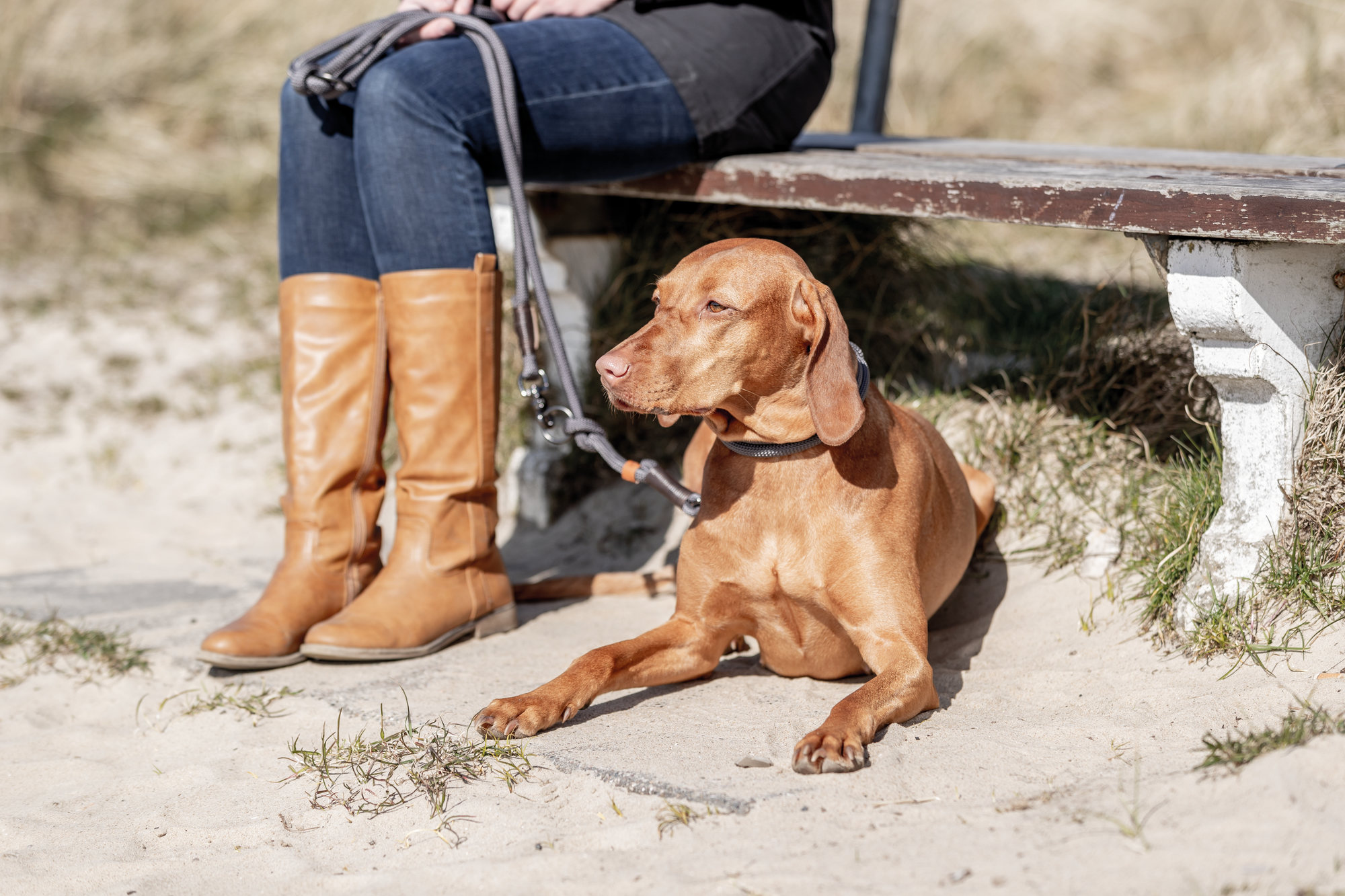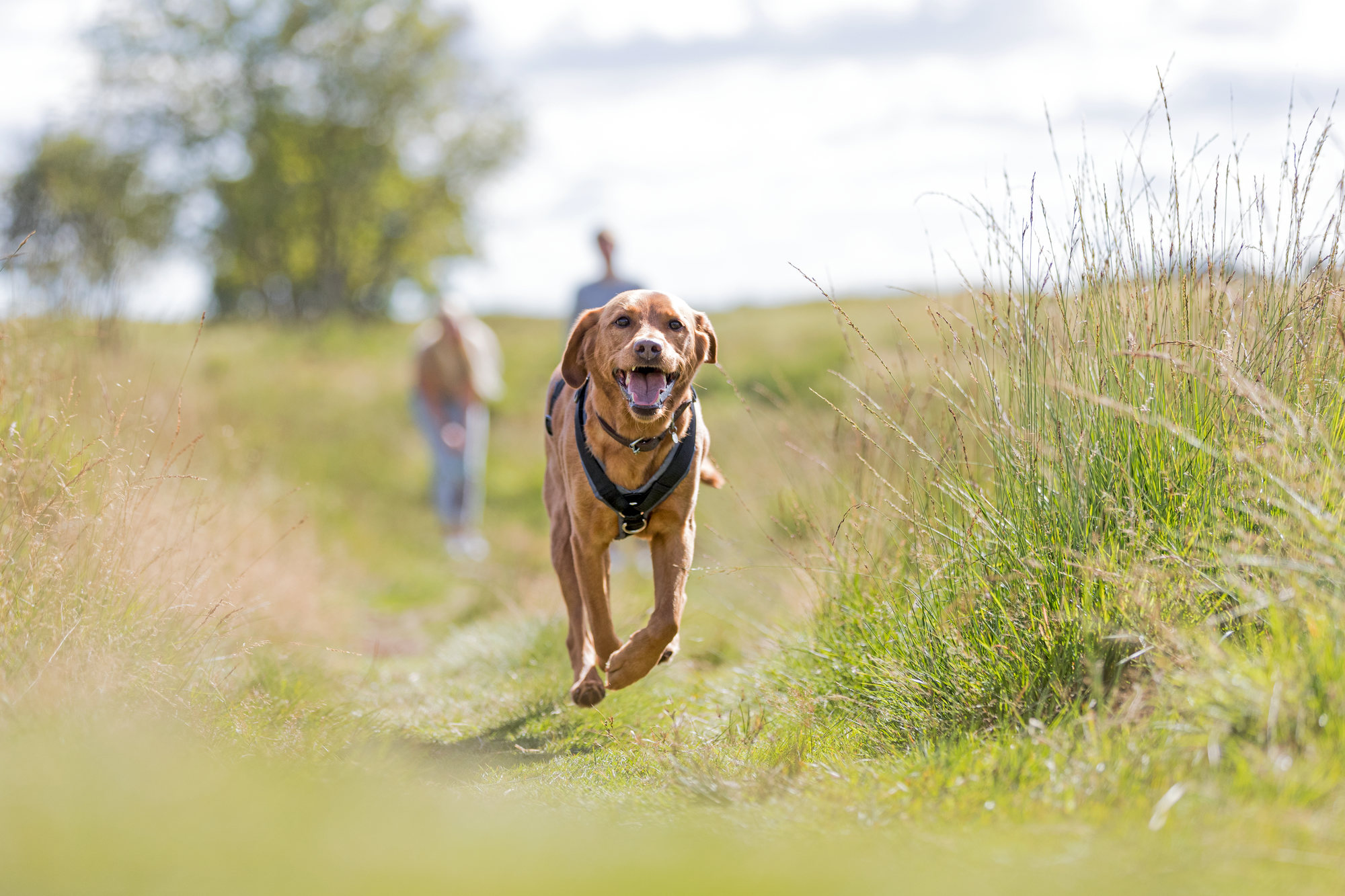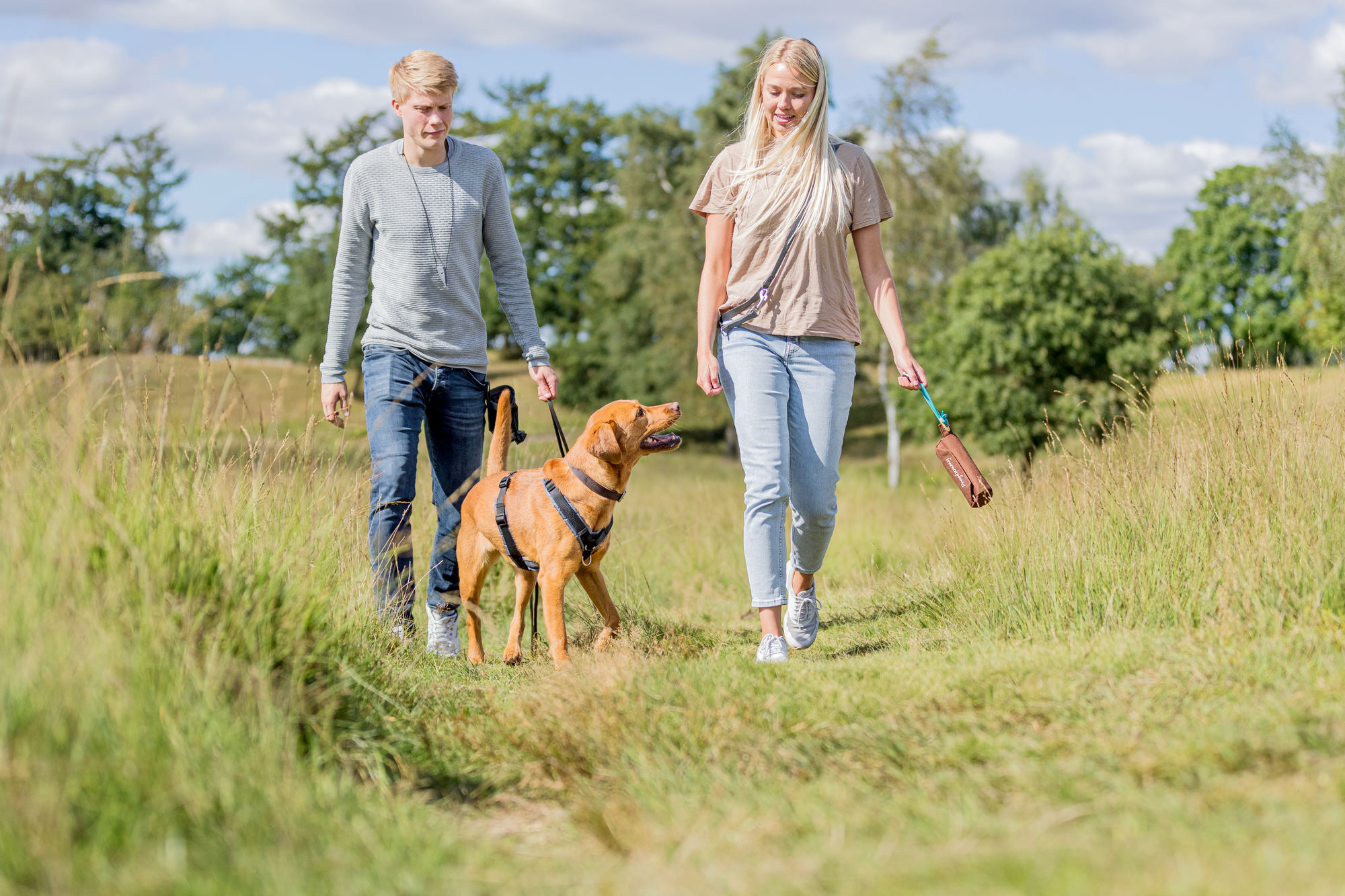Collar or Harness?
Often dog owners ask themselves: Is a collar or a harness more suitable for my dog or puppy? There is no general answer to that question - both products have pros and cons.







The Collar
A collar is often more comfortable for the dog and easier for the handler to put on and take off. A collar makes the dog less likely to get hurt if it runs loose, plays with other dogs, or gets caught in something.
The Harness
A harness is gentle on muscles, the spine, larynx, thyroid gland, and trachea. The pressure caused by the dog pulling on the leash or sudden strains is distributed much more evenly. Therefore, a harness is a good choice, especially for puppies who need to become skilled in everyday behavior and leash walking.
A harness is also recommended for sporting activities with the dog, such as cycling, jogging, etc., as unexpected movements can always occur during such activities. The same applies to the use of tracking leashes or retractable leashes. These should always be combined with a harness to avoid injury to the cervical spine caused by tugs.
The Right Fit
With all harnesses, a proper fit is essential. A harness that does not fit properly can lead to health problems just as much as a collar that is put on incorrectly. This applies to all harness types.
It is always good if the dog is used to both products. There may be unexpected situations that make using one or the other harness temporarily necessary, for example, in case of injury. Then the dog will feel less stress if he is familiar with both.
After measuring the chest circumference, the harness should be adjusted considering the following points:
- shoulders and front legs should be able to move freely
- the belly strap sits on the ribcage (leave at least 2-3 fingers wide between the armpit and the belly strap, more for large sizes)
- the chest strap rests on the sternum

